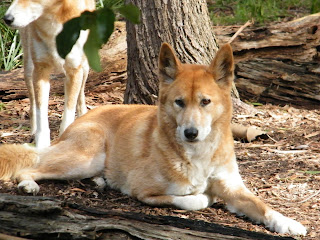The genus Berardius encompasses two species of beaked whale which have an antitropical distribution; Arnoux’s beaked whale Berardius arnuxii in cold Southern Hemisphere waters and Baird’s beaked whale Berardius bairdii in the cold temperate waters of the North Pacific. There has been some debate over whether these two forms represent distinct species or whether they are simply geographic variants. Several morphological characters have been suggested to distinguish them, but the validity of each has been disputed; currently, it seems that there are no significant skeletal or external differences between the two forms, except for the smaller size of the southern specimens known to date. Berardius spp. are the largest of the beaked whales, growing up to 10–12 m in length. They are sometimes referred to as 'four-toothed whales' or 'giant beaked whales', but are most commonly known by their genus name, Berardius.
El género Berardius abarca dos especies de ballena picuda que tienen una distribución antitropical; Picuda
ballena Berardius arnuxii de Arnoux en frías aguas del Hemisferio Sur y
la ballena picuda Tapirus Berardius de Baird en las frías aguas
templadas del Pacífico Norte. Ha habido cierto debate sobre si estas
dos formas representan especies distintas o si son simplemente
variantes geográficas.
Varios caracteres morfológicos se han sugerido para distinguirlos, pero
la validez de cada uno ha sido disputada; Actualmente,
parece que no hay diferencias esqueléticas o externas significativas
entre las dos formas, excepto para el tamaño más pequeño de los especímenes del sur conocidos hasta la fecha. Berardius spp. son la mayor de las ballenas picudas, que crece hasta 10-12 m de longitud. Ellos se refieren a veces como "ballenas de cuatro dientes" o
"ballenas picudas gigantes ', pero son los más comúnmente conocidos por
su nombre de género, Berardius.
The two species have very similar features and would be indistinguishable at sea if they did not exist in disjoint locations. Arnoux's is generally smaller. Estimated lengths of live Arnoux's at sea have been up to 12 m (39 ft), but all dead specimens have been considerably smaller. The Baird's, on the other hand, have been confirmed to grow to 12–13 m (39–43 ft). The weight is up to 14,000 kg (31,000 lb).
Las dos especies tienen características muy similares y serían indistinguibles en el mar si no existen en lugares disjuntos. Arnoux de es generalmente más pequeñas. Longitudes
estimadas de Arnoux en directo de en el mar han sido de hasta 12 m (39
pies), pero todos los especímenes muertos han sido considerablemente
menor. El Baird, por otro lado, se ha confirmado que crezca a 12-13 m (39-43 pies). El peso es de hasta 14.000 kg (31.000 libras).
Both whales have a very long prominent beak, even by beaked whale standards. The lower jaw is longer than the upper and the front teeth are visible even when the mouth is fully closed. The melon is particularly bulbous. The body shape is slender—the girth is only 50% of length. The body is uniformly coloured and a particular individual's colour may be anything from light grey through to black. The flippers are small, rounded and set towards the front of the body. The dorsal fin similarly is small and rounded and set about three-quarters of the way along the back. Adult males and females of both species pick up numerous white linear scars all over the body as they age and may be a rough indicator of age. There is little sexual dimorphism in either species.
Ambas ballenas tienen un pico prominente muy largo, incluso para los estándares de ballenas picudas. La
mandíbula inferior es más larga que la parte superior y los dientes
delanteros son visibles incluso cuando la boca está completamente
cerrada. El melón es particularmente bulbosa. La forma del cuerpo es delgado, la circunferencia es sólo el 50% de la longitud. El
cuerpo es de color uniforme y el color de un individuo en particular
puede ser cualquier cosa, desde gris claro hasta el negro. Las aletas son pequeñas, redondeadas y establecer hacia la parte delantera del cuerpo. La
aleta dorsal es igualmente pequeñas y redondeadas y establecer
alrededor de tres cuartas partes del camino a lo largo de la parte
posterior. Los
machos adultos y hembras de ambas especies recogen numerosas cicatrices
lineales blancas en todo el cuerpo a medida que envejecen y pueden ser
un indicador aproximado de la edad. Hay poco dimorfismo sexual en cualquiera de las especies.
































